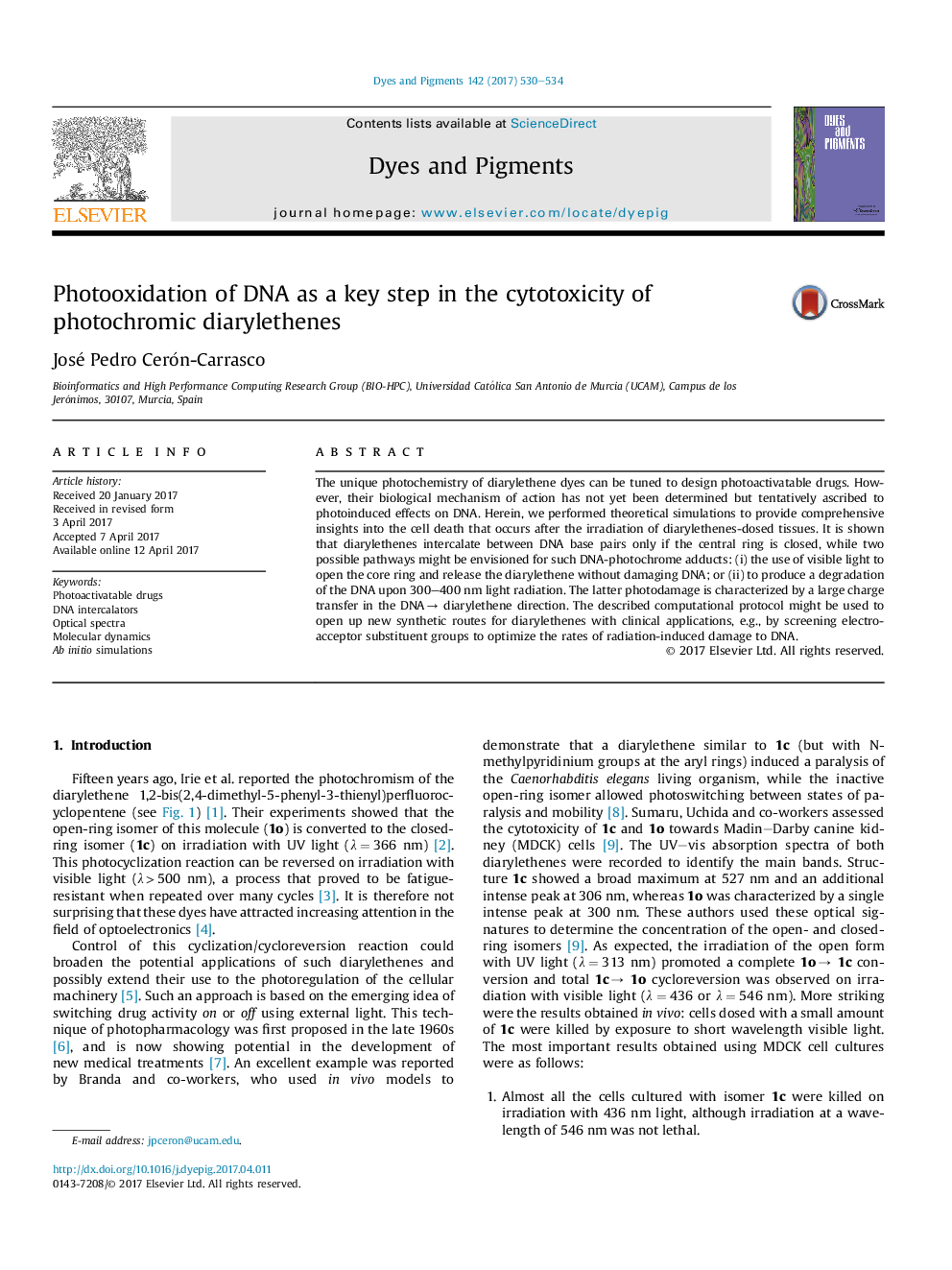| Article ID | Journal | Published Year | Pages | File Type |
|---|---|---|---|---|
| 6469467 | Dyes and Pigments | 2017 | 5 Pages |
â¢The photochemistry of diarylethene dyes can be tuned to design photoactivatable drugs.â¢DNA is the final target for the closed-ring isomer but not for the open counterpart.â¢The photooxidation window is only accessible by the ring-closed form.
The unique photochemistry of diarylethene dyes can be tuned to design photoactivatable drugs. However, their biological mechanism of action has not yet been determined but tentatively ascribed to photoinduced effects on DNA. Herein, we performed theoretical simulations to provide comprehensive insights into the cell death that occurs after the irradiation of diarylethenes-dosed tissues. It is shown that diarylethenes intercalate between DNA base pairs only if the central ring is closed, while two possible pathways might be envisioned for such DNA-photochrome adducts: (i) the use of visible light to open the core ring and release the diarylethene without damaging DNA; or (ii) to produce a degradation of the DNA upon 300-400Â nm light radiation. The latter photodamage is characterized by a large charge transfer in the DNAâ diarylethene direction. The described computational protocol might be used to open up new synthetic routes for diarylethenes with clinical applications, e.g., by screening electroacceptor substituent groups to optimize the rates of radiation-induced damage to DNA.
Graphical abstractDownload high-res image (245KB)Download full-size image
